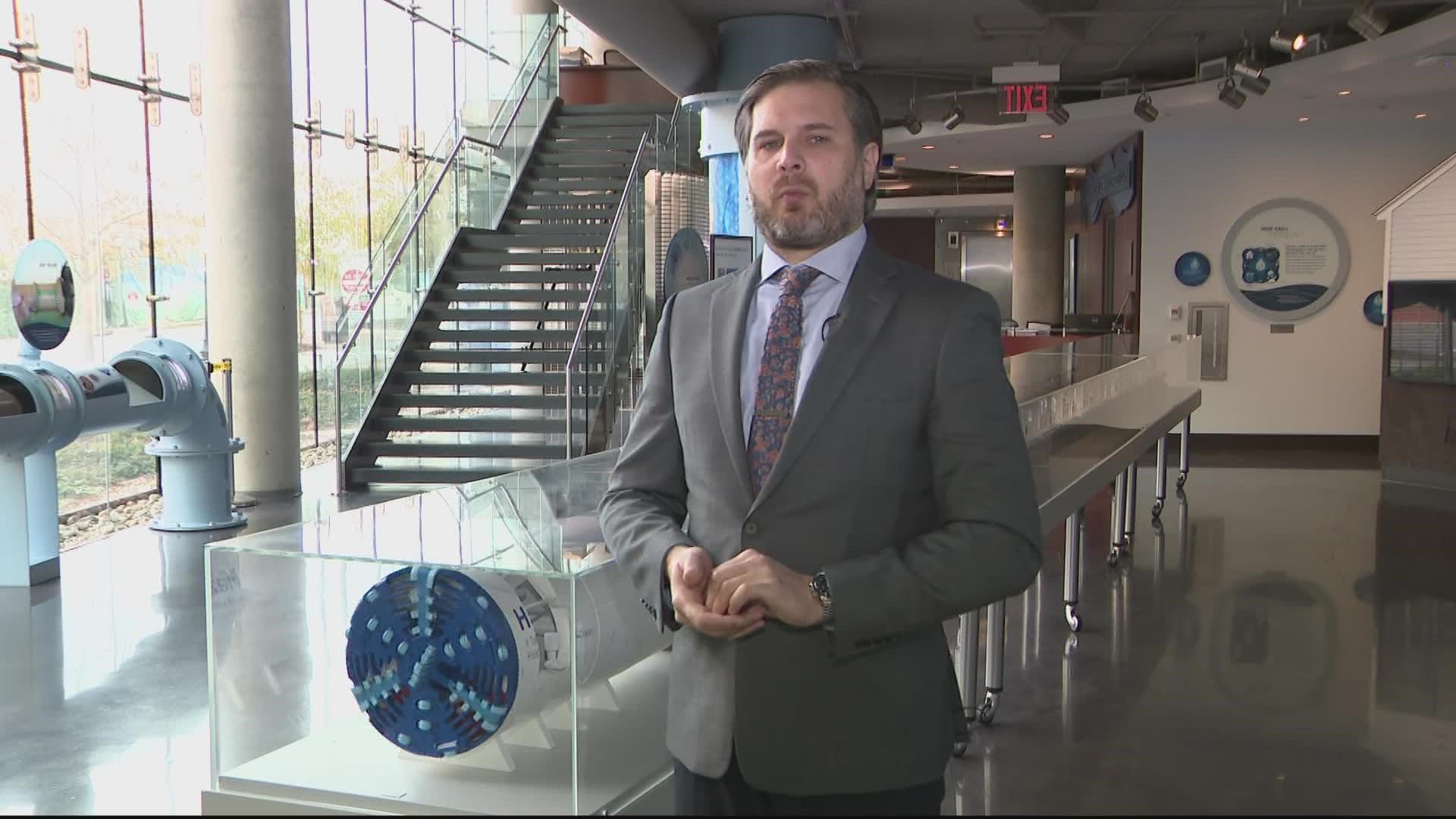ALEXANDRIA, Va. — Nearly 150 feet underground, the city of Alexandria is tunneling toward a more environmentally friendly future. The key to that future is 360-ton tunnel-boring machine, affectionately named Hazel.
Hazel’s job is to bore a 2-mile-long tunnel under Old Town that should solve one of Alexandria’s biggest environmental issues since the city was built.
“When it rains, the main pipes fills with both rainwater and sewage causing overflows of harmful bacteria and pollution to the Potomac River and its tributaries,” said Justin Carl, a project manager for Alexandria’s wastewater utility Alexandria Renew.
The problem isn’t unique to Alexandria. More than 800 towns and cities across the U.S. have a combined rainwater and sewage system. The impact is different for each. In Alexandria, it represents a significant source of pollution.
“In a year, about 140 million gallons of combined sewage overflow to our waterways here in Alexandria, when we're done with this project that will be reduced to less than 17 million,” Carl said.
The project is the tunnel dug by Hazel. Carl said it will create a place that traps sewage and brings it to Alexandria Renew’s treatment plant.
As you can imagine, a project of this magnitude costs a lot. The city of Alexandria voted years ago to approve this project. Between federal and local dollars, it costs around $454 million. Alexandria Renew is charged with carrying it out.
To find out how the tunnel will get done, we got lowered by crane down almost 150 feet in a mine shaft. That's where we met project manager Ryan Payne.
Payne showed us the progress Hazel has made so far since they broke ground in early December. In that time Hazel has bored several hundred feet.
“Hazel moves four and a half feet at a time, builds a ring, and then continues mining,” Payne said.
The concrete rings are part of the key to not disturbing the ground above. As Hazel slowly bores on its two-mile path, the concrete rings maintain the earth pressure. There is no disturbance at the surface level. If you’re wondering: As Hazel digs, where does all the dirt and sediment go?
“All the material that's excavated up at the front of the machine gets withdrawn through a screw and then deposited on the conveyor belt to be sent out and up to the surface,” Payne explained.
At four feet at a time and two miles to go, the team expects to be done by 2025, with an impact that changes the future.
“We’re doing our part to build for a foundation of a healthier Potomac River,” Carl said.

